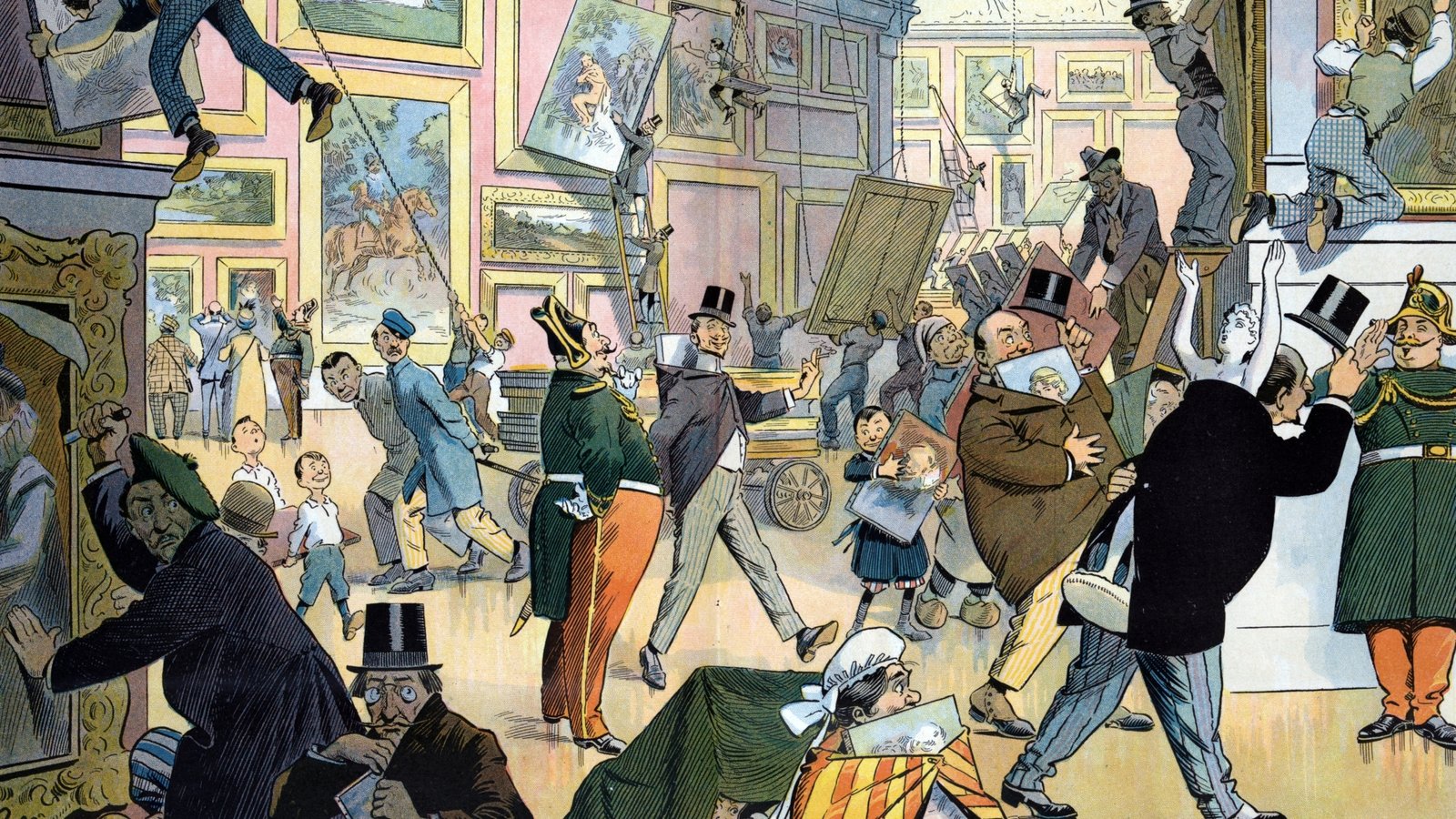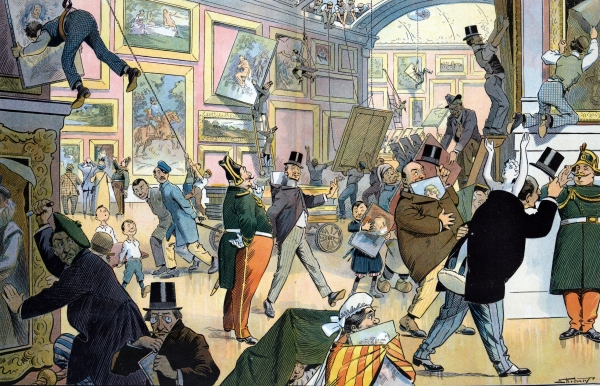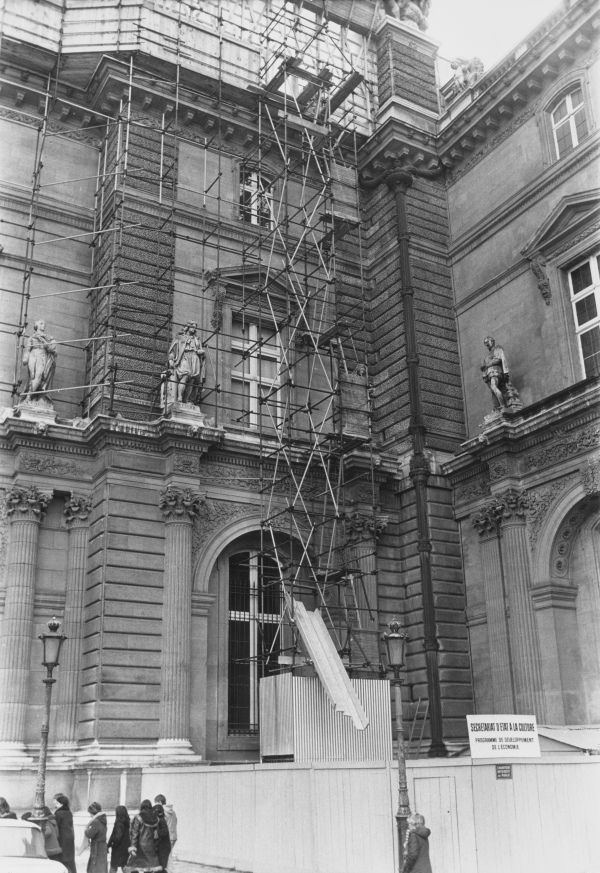
This is not the first high-profile theft at the Louvre. Here is a history of previous thefts

The Louvre Museum in Paris has been closed after masked thieves stole priceless jewels in what officials described as a work of art. A seven-minute robbery in broad daylight.
Shortly after the museum opened on Sunday morning, two bandits used a truck lift to break into the Galerie d’Apollon exhibit, which houses the French crown jewels and other treasures, through a second-floor window. This is according to the Paris prosecutor’s office, which is searching for four suspects.
The thieves smashed through the display cabinets, stealing what a Louvre spokesman described as Eight items to "Invaluable cultural and historical value." They then fled toward a nearby highway on high-powered motorcycles. Two pieces of jewelery – including the tiara of Empress Eugenie, wife of Napoleon III – were later found near the museum.
The theft dealt a strong blow to one of the most famous museums in the world, which contains valuable works such as the “Mona Lisa” painting by Leonardo da Vinci, and it attracted everyone’s attention. About 9 million Visitors in recent years.
But it’s not the first. Thieves have raided the Louvre several times over the decades, and once managed to snatch the Mona Lisa itself from the wall.
Theft made Mona Lisa famous
The Louvre was built in the 12th century as a military fortress, and by the 14th century it was used as a royal residence and art collecting center.
The revolutionary government opened The Louvre as a public museumCentral Museum of Art, In 1793. It displayed artworks formerly in the royal collection, which embody the Enlightenment ideals that sparked the French Revolution four years earlier.
The Louvre Museum now houses some of them 35,000 works On permanent display. Despite its fortified history, it has been the victim of several high-profile security breaches, including the 1911 attack. Theft of the Mona Lisa painting.“.
On a Monday morning in August of that year, Vincenzo Peruggia, an Italian worker who had worked briefly at the Louvre, put on his old uniform, entered the museum, and when the coast was clear, took the painting directly from the wall. He unwrapped it in a nearby stairwell and carried it out of the building under his robe.
At the time, the Mona Lisa was not widely known outside the art world. Because the museum had only been briefly removing paintings from the walls for photography, the Mona Lisa’s disappearance went unnoticed for 28 hours — at which point it quickly became international news.

“The Mona Lisa became this incredibly famous painting, literally overnight,” said writer and historian James Zug. He told NPR in 2011A century later.
In fact, the theft received so much attention that Perugia decided not to try to sell it and hid it at the bottom of a false trunk instead.
He tried to sell it more than two years later, contacting an art dealer in Florence who immediately became suspicious and informed the authorities. Peruggia eventually pleaded guilty to stealing the painting, saying he wanted to return it to its native Italy, and was sentenced to eight months in prison.
The robberies did not stop there
The Louvre and its works survived Nazi Germany’s occupation of France during World War II, thanks to Jacques Goujard, director of the French National Museums.
On the eve of the war, Gogard, with the help of staff and volunteers, secretly arranged for the Mona Lisa and thousands of other works of art to be evacuated to the French countryside to protect them from looting.
But Nazi forces systematically looted tens of thousands of works from Jewish families and wealthy collectors during the war. Many of them were returned to France through the efforts of the post-war government, but were not recovered. The Louvre began displaying it in 2018, as part of a Renewed efforts to reunite them With the heirs of the original owners.
The post-war period saw a series of daring daytime art thefts, e.g National Geographic reports.
In May 1966, thieves stole five pieces of antique gold and ruby jewelry from the airline’s cargo lounge at JFK Airport in New York City. The pieces were on their way back to the Louvre Museum after being displayed on loan at a museum in Virginia.
the The New York Times reported Two months later, investigators found the jewelry in a grocery bag as he passed by "From one man to two others in exchange for an envelope containing $2,900." The three were arrested.

A decade later, in December 1976three masked men broke into the Louvre and stole what the New York Times described as “King Charles X’s priceless diamond-encrusted sword.” This robbery bears striking similarities to Sunday’s events.
A museum spokesman told the newspaper at the time that the trio "He climbed a metal scaffold erected by workers cleaning the facade of the former palace and smashed the windows of the second floor." They then smashed the display case to grab the sword. They beat up two guards and "He raced at the Apollo Hall" – The same gallery that was targeted this weekend – but escaped the way he came after an automated alarm went off.
The sword was never recovered. The Times notes that it was not the only piece stolen from the Louvre in 1976: in January of that year, it says, “thieves stole a painting by the Flemish School.”
Two pieces of 16th-century Italian armor were taken from the Louvre one evening in May 1983, a mystery that persisted for decades until… Featured breastplate and helmet At an estate auction in Bordeaux, France, in early 2021. The pieces were reinstalled in the museum that year, but details about their disappearance remain scarce.
In July 1990, thieves cut a small painting — “Portrait of a Seated Woman” by Pierre-Auguste Renoir — from its frame and stole it in broad daylight from a third-floor gallery, The Verge reported. News reports at the time. Raised it Inventory revealed That dozens of pieces of ancient Roman jewelry had also been taken sometime before that.
In May 1998, a thief stole a 19th-century painting by French painter Jean-Baptiste Camille Corot. according to News reportsAfter a guard discovered he was missing, officials closed the museum for hours and police conducted body searches on hundreds of visitors as they left. The painting was never found.
Why are these violations repeated?

Following the 1990 thefts, then-Director of the Louvre Michel Laclot “Crisis,” he declared,” the The Washington Post reported at the time.
Laclot said the crisis would be exploited to strengthen the museum’s security measures, including increasing its security budget by about $1.8 million and hiring an administrator. "Very specialized" To recommend policy changes.
But issues such as overcrowding, reform and Climate change It continued to invade the Louvre Museum.
Tensions reached a boiling point last January, when Laurence de Carre, president and director of the Louvre, sent a letter to the French culture minister outlining issues of concern – which was leaked to the press.
included "Increased breakdowns in severely deteriorated places," "Outdated technical equipment," and "Alarming temperature fluctuations threaten the preservation of works of art." According to what was reported by the French newspaper Le Parisien.
Later that month, French President Emmanuel Macron introduced Extensive renovation plans For the museum, which is expected to cost up to $834 million and take nearly a decade to complete.
Among other changes, the project will create a room dedicated to the “Mona Lisa,” and create a new room "Grand entrance" To reduce congestion and Upgrading the building’s security system.
Louvre staff, including curators, ticket agents and security personnel, say these upgrades cannot come soon enough.
In June, the museum was closed for a day after employees went on strike in protest "Unmanageable crowds, chronic understaffing and what one union called “indefensible” working conditions." the The Associated Press reported.
These vulnerabilities have become top of mind in the wake of Sunday’s robbery, with other cultural institutions tightening security and French officials Take the blame.
"What is certain is that we failed, as people were able to stop a furniture crane in the center of Paris, and get people to lift it in several minutes to obtain priceless jewelry," Justice Minister Gerald Darmanin told France Inter radio on Monday.
Copyright 2025, NPR













Post Comment